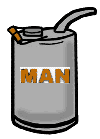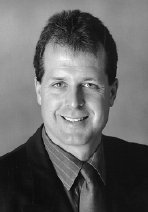|
Past Preventive Maintenance columns: Examining
Accuracies on Machining Centers Zero
Points on Machining Centers—Machining Centers vs.
Lathes Completing
Lathe Maintenance—Tailstock, Sub-Spindle, and
Zero-Point Alignment A
Closer Look at Spindles and Turrets The
Next Level: Accuracy—Checking Backlash on Lathes
Inspecting
the Electrical Cabinet Everyone's
Favorite Task—Cleaning Coolant—The
Most Ignored Fluid in your Machines It's
Summertime—Is your Chiller Working? The
Other Oils—Inspecting the Main Hydraulic Systems
|
MIKE BREEN ON PREVENTIVE MAINTENANCE |
|
Machining Center PM— by Michael W. Breen |
|
|
As you noticed, the X-, Y-, and Z-axes are not much different from a lathe, but changing the zero points (reference points) and axis offsets have completely different effects. This month we will begin with the B-axis or rotary index table. The B-Axis Index Table This axis is a bit of a different animal. It has bearings, a servo drive motor, and some sort of feedback device; but everything else is different. Generally, the servomotor is coupled to a worm shaft, and the worm shaft interfaces with a ring gear that is wrapped around the upper coupling. The coupling is round and may have 360 teeth. The table indexes in reference to degrees. For example, if you have a 1º table the coupling has 360 teeth. If you have a 5º table, it has 72 teeth. The upper and lower couplings mesh like a perfect set of teeth. The machining table is attached to the upper coupling and the lower coupling is connected to the base or casting, which generally rides on a guide or way of a different axis. Here is the sequence: a hydraulic piston pulls the coupling apart; the motor turns and the worm gear rotates with it; and this turns the ring gear that is attached to the upper coupling. As the coupling rotates so does the table. When the feedback mechanism sends back the signal indicating it is at the requested position, rotation stops and the table clamps. NC Table NC (numerical control) table systems work a little differently. Index tables pick up, rotate, and sit down, where NC tables just rotate. The clamping and unclamping take place internally. Instead of having a toothed coupling, NC tables are direct drive or use the worm gear concept, where the gear is mated with another gear that is not split. The advantage: the NC table can rotate during machining. The disadvantage: position-holding strength during heavy cuts. PM On B-Axis Many of these parts are pinned for alignment and timing. PM on the B-axis entails many small steps, none of them very timely. First, and most importantly, check the oil levels and look for contamination. Second, check the alignment. To do this, mount an indicator to the spindle face and tram across the side of the table. It should have no runout; a couple of ten-thousandths is allowable, at the most. Aligning the axis can be as simple as removing a pin or changing an offset. As always, refer to your manuals for the proper procedure. Backlash On Index Tables To check for backlash on index tables, use your eyes, not an indicator. Index the table in one direction and watch it clamp. Index the table in the other direction and watch it clamp. Does it clamp the same way? Does one direction seem to shift into place, while the other does not? Will it only clamp in one direction? These are all signs of backlash (the latter being the most extreme). Repairing this problem should not be carried out during a PM. Schedule this later, but do not forget about it. Unless severe, the backlash can usually be masked by a parameter. This will stop some of the wear during an index, but it is only a temporary repair. Backlash On NC Tables The NC table is more like a regular axis. To check it, mount an indicator on the spindle and zero it out on the table. Take note of the direction that you rotate the NC table into your indicator. Move the indicator away from the table by moving the spindle back, so the table can rotate without smacking your indicator into the chip auger. Rotate the axis 90° in the opposite direction, then 180° the other way, and finally back 90°. Position the spindle in its former position, and the indicator should repeat. Try to remove with backlash compensation, but NC tables do not hide backlash well. This repair could be a big one, too. A squareness check also is recommended on machining centers and mills. When repairing squareness problems, I have found that re-leveling is all that is required. That is the next technical discussion we will have when we continue with PMs. Next month we are going to take a break and answer some of the interesting e-mail that I have received; and I might even ask you a question or two. Talk to you next month. Mike Breen, a Field Service Engineer with Ellison Machinery Company of Wisconsin, invites you to share your own machine repair and maintenance experiences with him. For comments and inquiries about these articles, his e-mail address is mbreen@ellisonwi.com. - April 2001 |

 Last month we discussed machining center accuracies.
Last month we discussed machining center accuracies.